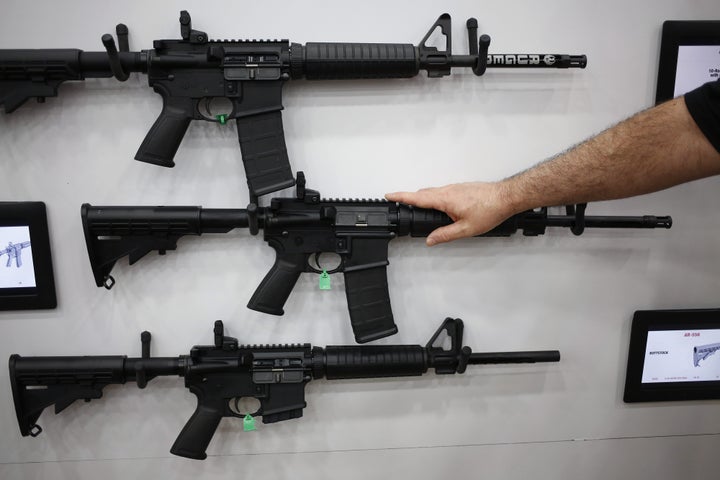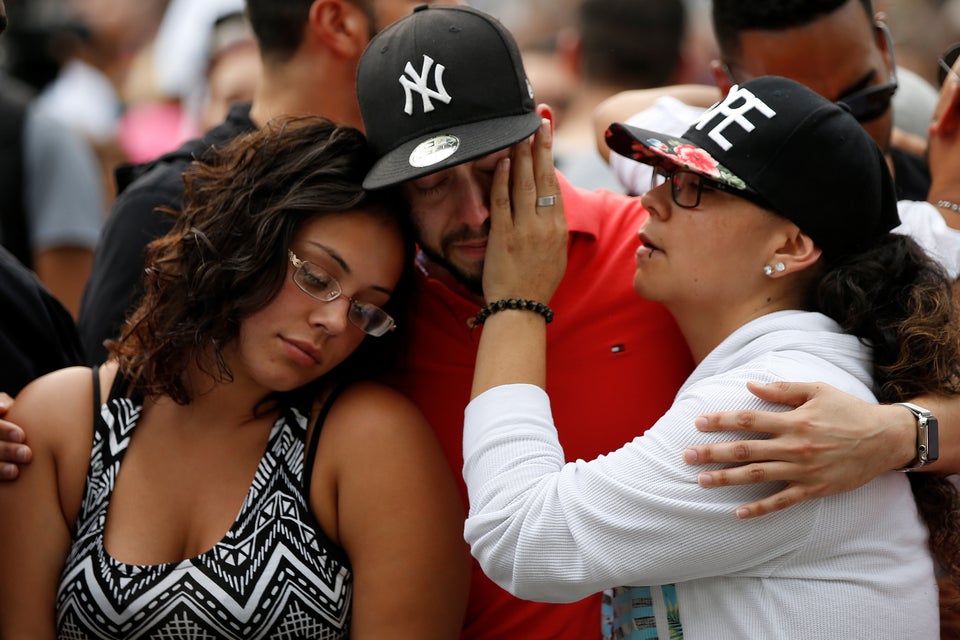
In the aftermath of the deadliest mass shooting in U.S. history, the political debate has quickly turned to the weapon a gunman used to massacre 49 people and injure 53 more at a gay nightclub in Orlando, Florida, on Sunday.
Some supporters of stricter gun laws argue it's far too easy to obtain firearms like the shooter's Sig Sauer MCX, an $1,800 semi-automatic rifle and a cousin of the highly popular AR-15. They say the same features that have made these weapons fit for the battlefield render them unfit for civilian use. In the wrong hands, their accuracy, reduced recoil, large magazine size and high rate of fire make these guns perfectly suited to inflict mass casualties in a short period of time. And it's hard to discount that concern: In seven of the last eight high-profile mass shootings -- as well as in earlier incidents in Newtown, Connecticut, and Aurora, Colorado -- perpetrators were armed with assault-style rifles.
But as momentum builds for a new assault weapons ban, data shows just how small of an effect such legislation would have on the overall levels of gun violence in the U.S.
At least 84 people have been killed and 119 have been injured so far this year in 86 shooting incidents involving assault-style rifles, according to data compiled by the Gun Violence Archive, a not-for-profit corporation that tracks gun violence. Those numbers include the casualties at Pulse nightclub over the weekend.
There have been at least 267 incidents involving assault-style rifles in 2016, including reported weapons thefts, crimes in which the guns were brandished, arrests for illegal possession and other legal interventions in which they weren't fired.
Those deaths account for about 2 percent of the 6,153 gun deaths and less than 1 percent of the 12,560 gun injuries the Gun Violence Archive has counted so far this year. This tally consists largely of homicides and assaults, but also includes suicides that were part of a murder-suicide. It also counts accidental deaths, the majority of which involve handguns, not rifles.
If those numbers seem high, that's because they are. The U.S. has the highest gun death and ownership rates in the developed world. Americans are 10 times more likely to be killed with a gun than people in other developed nations; with an estimated 300 million to 400 million civilian firearms, the U.S. is by far the most heavily armed nation per capita. About 20 million to 30 million of those guns are assault-style rifles, according to the National Shooting Sports Foundation, a lobbying group that wants you to refer to these weapons as "modern sporting rifles."
Gun Violence Archive notes that its count could be incomplete because it relies on news and police reports, which don't always include full details on the weapons used. Its data also only specifies incidents involving AR-15s and AK-47s, two of the most popular types of assault-style rifles but not the only ones available to civilians.
While these rifles hardly factor into the routine gun violence that rips through the nation every day, we found plenty of incidents that underscore the inherent danger they present.
In May, for example, a military veteran engaged in a standoff with police in Houston managed to fire off 212 shots from an AR-15 before a SWAT sniper killed him. He injured six people with the rifle, all after killing a man in an ambush with a handgun. The suspect's family claimed he was suffering from post-traumatic stress disorder.
Earlier this week in Detroit, armed gunmen used an AK-47 and another weapon to open fire on a vehicle, killing two and injuring one more in a hail of 30 bullets. An AK-47 was also used in a mass shooting in Pittsburgh earlier this year, when gunmen unloaded 49 rounds into a crowd of partygoers, killing five and wounding three.
Other shootings have flown further under the radar, likely because they didn't result in casualties. Earlier this week, a man reportedly armed with an AR-type rifle fired between 40 and 50 shots at police officers in Georgia. Nobody was injured.
With so many assault-style rifles already in circulation, gun advocates believe these rare instances of misuse shouldn't outweigh evidence suggesting that the overwhelming majority of owners are law-abiding citizens. But opponents argue that this level of firepower is unnecessary for civilians, especially considering how easy it is for them to obtain. They say these guns -- which have an average price tag of $1,000 but often come much cheaper -- give pretty much anyone the means to carry out a mass casualty event. Some lawmakers want to address that by renewing the sort of assault weapons ban that expired in 2004.
Which side is right? It's a worthwhile debate. And maybe we don't need to choose between nearly unlimited access and total prohibition. Maybe would-be buyers of assault-style rifles should have to first provide endorsements from people willing to vouch for their intentions. Maybe "modern sporting" riflemen and riflewomen should be required undergo periodic certification to make sure they're fit to be members of the "well-regulated militia" referenced in the Second Amendment. At the very least, maybe we shouldn't just let people buy these weapons on a whim, with no waiting period whatsoever.
This is really not the only conversation we should be having about gun violence -- a scourge of murders, suicides, domestic mass shootings and tragic accidents that claimed 33,636 lives, mostly by handgun, in 2013, according to the Centers for Disease Control and Prevention. But as long as we're only willing to discuss this massive, deeply entrenched issue in response to an atypical act of unfathomable brutality, maybe this is the best we can do.

